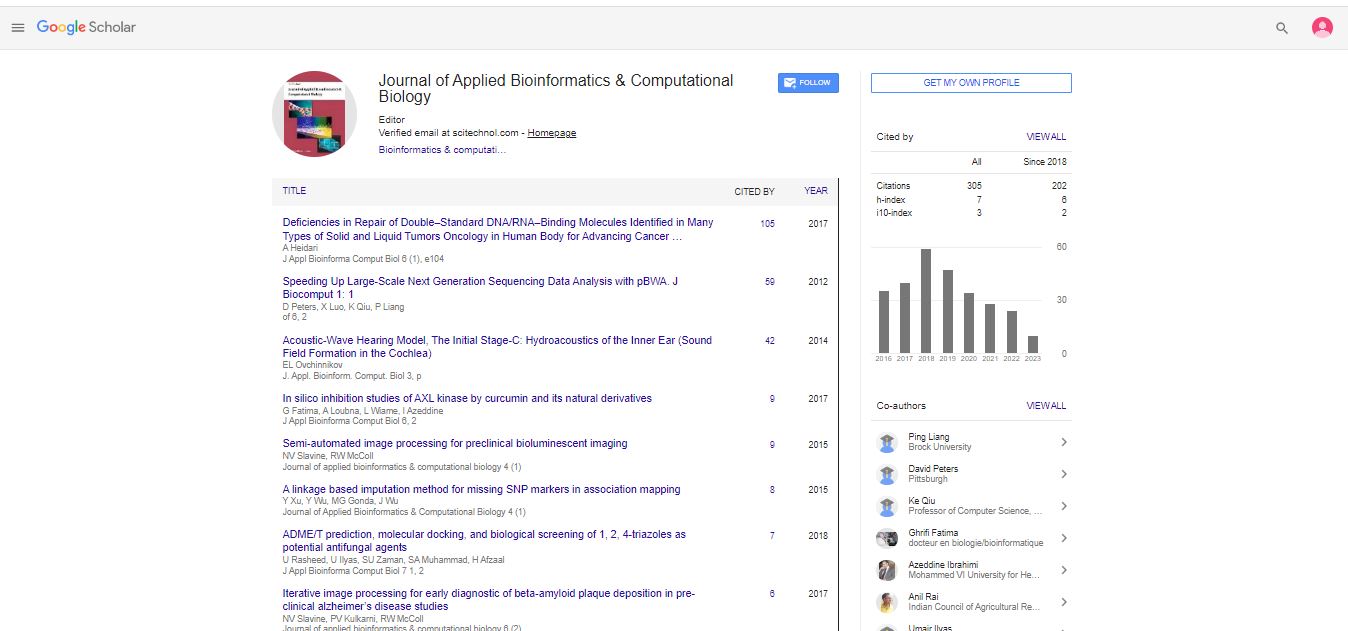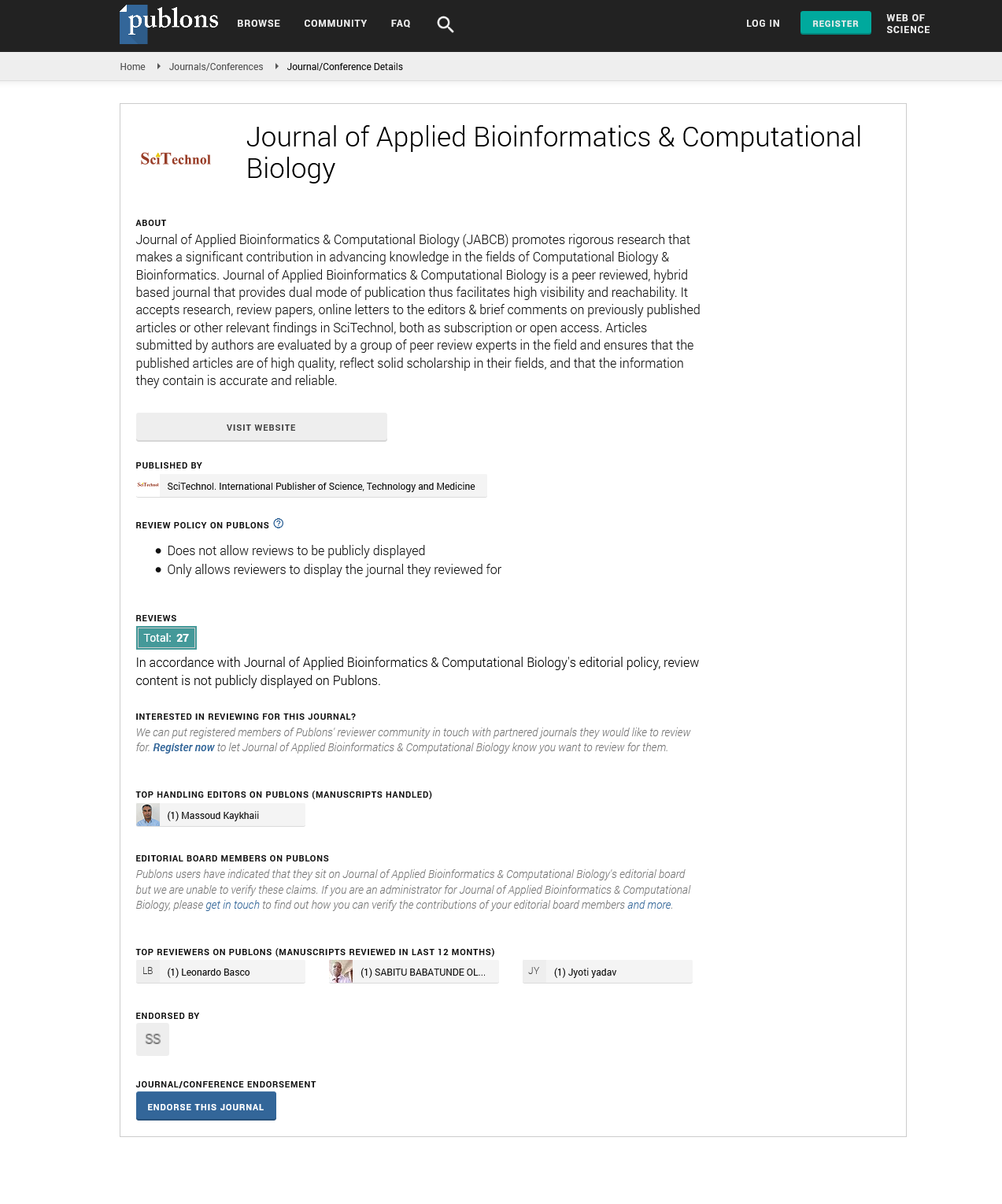Research Article, J Appl Bioinforma Comput Biol Vol: 7 Issue: 3
In silico Sequence Analysis, Homology Modeling and Function Annotation of Farnesyl Diphosphate Synthase (FDS) of Azadirachta indica
George Oche Ambrose1*, Olanrewaju John Afees2,3, Alakanse Suleiman Oluwaseun1, Chia Terkuma4,5, Mtomga Iorwuese6, Ayuba Abdullateef Kayode1, Balogun Basheer Ajibola1, Abiodun Wisdom Oshireku1, Afolayan Daniel Todimu1, Fagbemi Ranti-Ade Rebecca1 and Adekunle Precious1
1Department of Biochemistry, University of Ilorin, Ilorin, Nigeria
2Department of Anatomy University of Ilorin, Ilorin, Nigeria
3Ben Carson School of Medicine, Ileshan-Remo, Nigeria
4Department of Anatomy, Nile University of Nigeria, Abuja, Nigeria
5Department of Anatomy, University of Nigeria, Enugu, Campus, Nigeria
6Department of Anatomy, Ahmadu Bello University, Zaria, Nigeria
*Corresponding Author : George Oche Ambrose
Department of Biochemistry, University of Ilorin, Ilorin, Nigeria
E-mail: ocheab1@gmail.com
Received: September 11, 2018 Accepted: October 16, 2018 Published: October 23, 2018
Citation: Ambrose GO, Afees OJ, Oluwaseun AS, Terkuma C, Iorwuese M, et al. (2018) In silico Sequence Analysis, Homology Modeling and Function Annotation of Farnesyl Diphosphate Synthase (FDS) of Azadirachta indica. J Appl Bioinforma Comput Biol 7:3. doi: 10.4172/2329-9533.1000157
Abstract
Azadirachta indica is commonly referred to as Neem and is a member of the mahogany family, Meliaceae. Azadirachta indica has enormous therapeutic benefits and can show antibacterial activity, antiviral activity, anti-inflammatory activity, antioxidant effect and anticarcinogenic activity. Hence, it is recognized as a tree for solving global health problems. In the present study, subcellular localization prediction reveals that FDS of Azadirachta indica is a cytoplasmic protein. We predicted the 3D structure of the protein using homology modeling as 3D structure prediction methodology. The 3D structure of FDS was determined using SwissModel. Quality assessment of the model indicated that the model is reliable. Furthermore, it was discovered that FDS is involved in biological processes; metabolic process, cellular process, cellular metabolic process, primary metabolic process and the biochemical function of the protein is involved in transferase activity and metal ion binding

